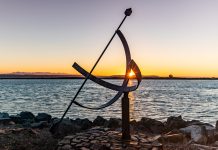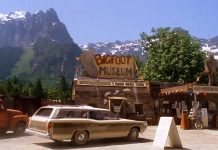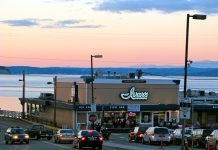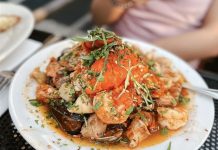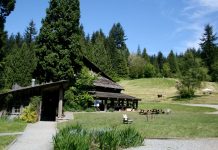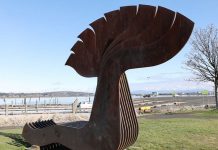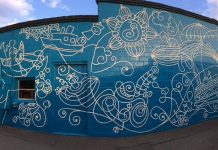Go see the wild Chum salmon run in the shallow waters of McLane Creek near the end of their long-traveled journey from the Pacific Ocean. Take the kids and the dog and make a family outing along McLane Creek Nature Trail near West Olympia. It’s just the right length for new little hikers, navigable with strollers, wheelchair accessible and pet friendly. McLane Creek is also a beautiful location to take family photos among the mature forest under leaves turning to fall colors or to practice wildlife photography.
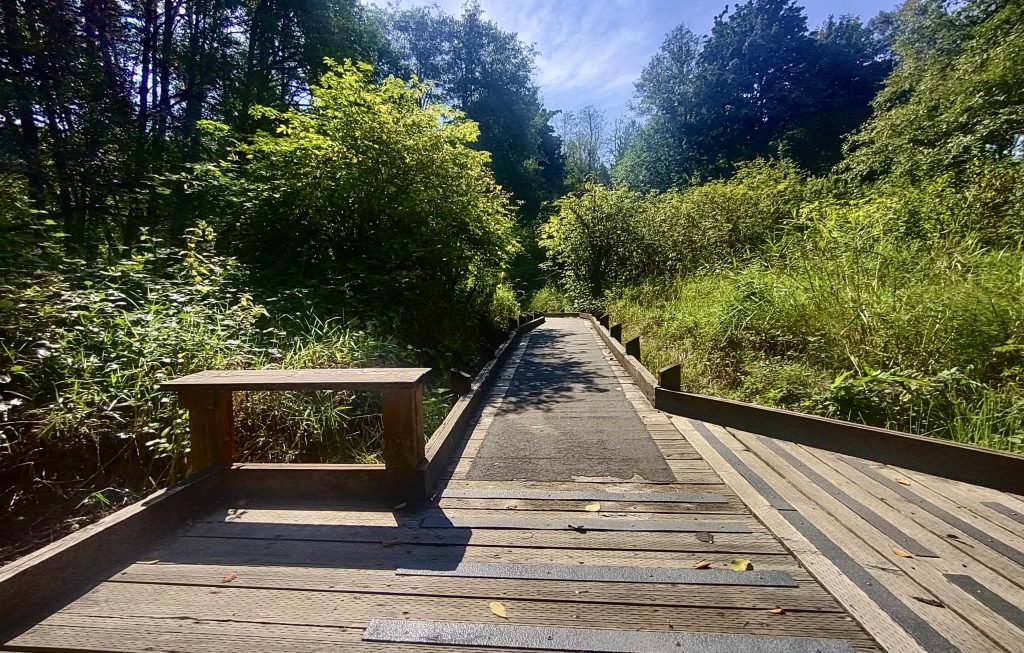
Every fall, salmon make their instinctive return from as far away as the Aleutian Islands in Alaska through the Pacific Ocean, down Puget Sound and up the connecting rivers and streams. In the Olympia area, one doesn’t have to travel far to see them come back.
Viewing Salmon at McLane Creek and What You May See There
You will mostly see Chum salmon swimming up McLane Creek since not only is it their home, but they are not strong jumpers and prefer the calmer waters of creeks. Chum salmon are one of five species of Pacific salmon, and they are also known by their nicknames, dog salmon or calico salmon, earned from their large teeth and their spotty coloring.
Chum are about 3-5 years old when they return to McLane Creek to spawn eggs in the sandy gravel. They weigh 9 to 11 pounds when they arrive, and while their bodies have changed during the ocean journey, they change yet again the closer they get to their destination. Salmon stop eating and devote all their energy to swimming upstream. You can recognize a male by the large hump behind its head and two vertical stripes on his side. Female Chum are smaller and have a horizontal stripe down their sides.
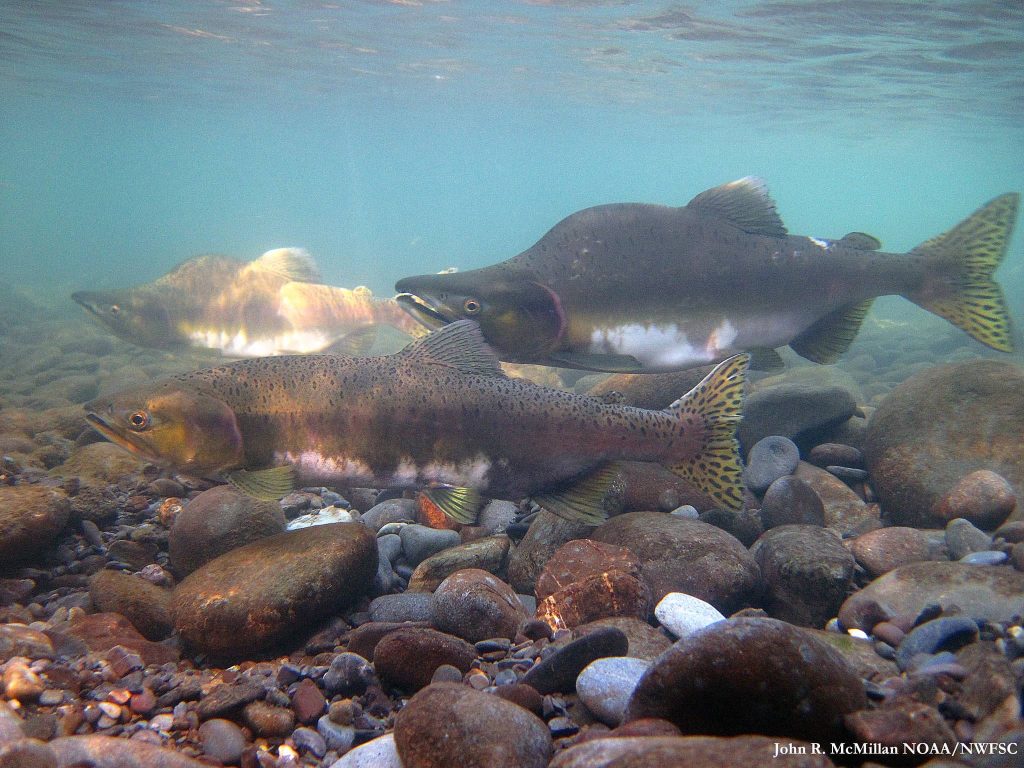
“After they spawn, their body decomposes and provides nutrients that move from the saltwater to the freshwater streams, and then get soaked up through tree roots and microbial systems from the surrounding forests,” says Shayne Noble, a biologist with Washington Department of Fish and Wildlife. “Studies have shown that the forests immediately surrounding fish-bearing streams are much more abundantly healthy and have a broader variety of nutrients coming in.”
You may see females digging their tails into the sand to deposit eggs, and males may be aggressively chasing other males away. The fertilized eggs that remain will hatch fry, which will grow, head downstream and out into the ocean to continue the cycle. They, too, will one day return to McLane Creek.
“Salmon in the Pacific Northwest are an important keystone species because they make up the majority of the diet for many other species such as whales and seals,” Noble says. “They are a huge resource for fishermen and tribal members and are very intricately woven into our food chain, our economy and our culture.”
McLane Creek Nature Trail Salmon Viewing Platforms
McLane has three fantastic creek overlooks. Elevated wooden platforms and one bridge each provide a direct view down into the creek. Consult the Washington State Department of Natural Resources McLane Creek Nature Trail map or view a map kiosk at the trailhead, where the restrooms are also located, and then take the 1.1-mile pond loop trail, beginning either to the left or right. McLane Creek runs along the furthest edge of the loop trail. Viewing Bridge trail is an out-and-back off-shoot that leads to a dead-end bridge over the creek. Two more overlooks from the pond loop trail provide wooden platforms with benches, views of the water and interpretive signage.
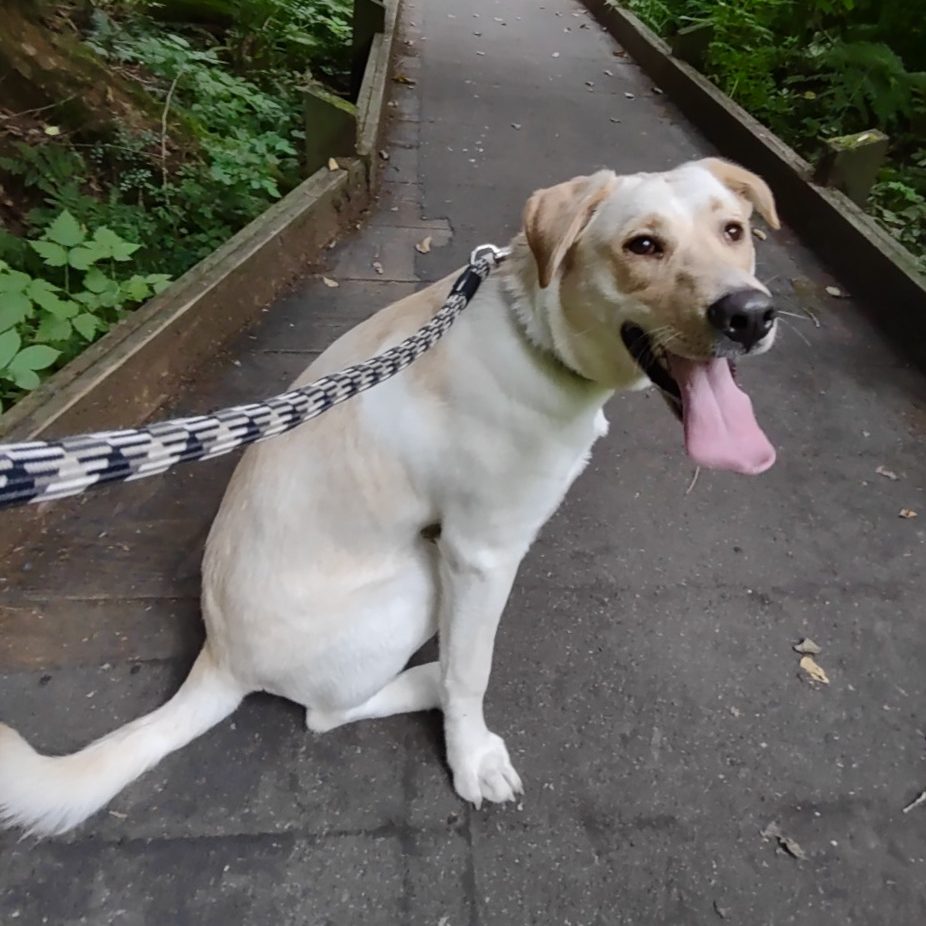
McLane Creek is an important, undisturbed habitat where the Chum salmon life cycle begins and ends. Their decaying bodies left in the stream provide those crucial nutrients but be aware that they are also toxic to dogs.
“For me, what comes to mind is reflecting on what a journey the salmon have been on just to get back to this point that we are witnessing,” Noble says about the yearly event. “It started in freshwater as a little egg and fry, survived predators in the stream, made it all the way out to the ocean and spent several years at sea evading fishermen and natural predators, and against all the odds, tracked its way back to where it started.”
Nature Photography at McLane Creek
The natural beauty at McLane Creek draws visitors to return again and again, and the backdrop of boardwalks, benches and towering shade trees is ripe for nature and portrait photography. If you seek macro-lens subject matter, fungi, lichen, leaves and insects are plentiful. Wildlife, such as turtles sunning on logs, wood ducks, red-wing blackbirds and newts swimming among the lily pads, also frequently show their faces. Benches along the trail are great places to take pictures of family and pets, pose for portraits or candidly enjoy nature.
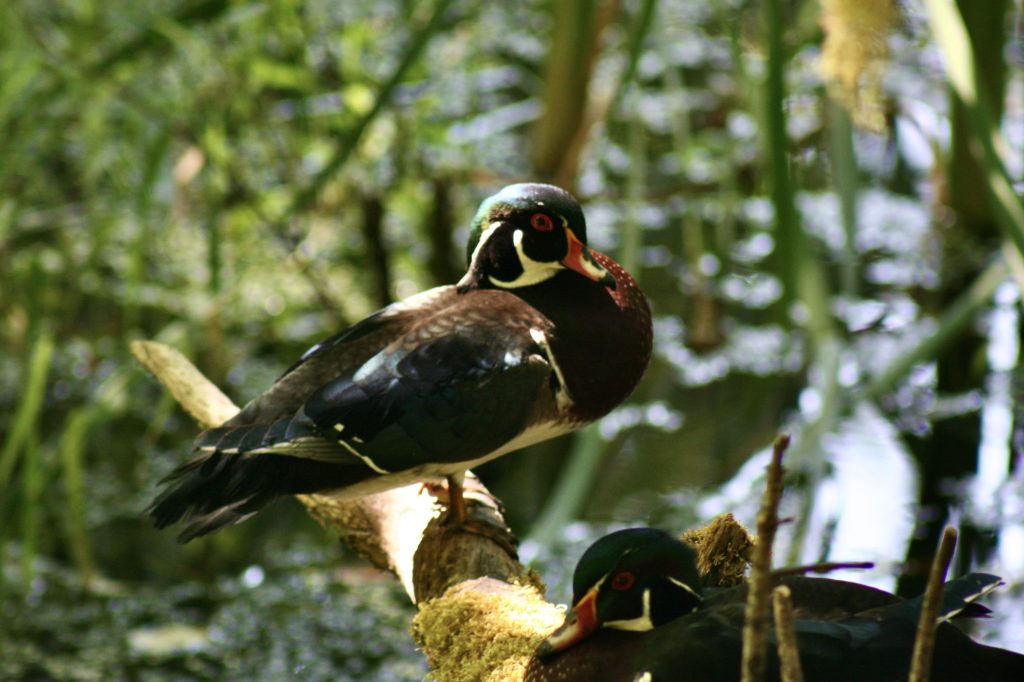
Ready the backpacks, camera gear and Discover Pass – it’s needed for parking – and head to McLane Creek for an afternoon among nature’s amazing cycles. For more information about things to see and do in the Olympia area, visit the Experience Olympia & Beyond website.
Sponsored


